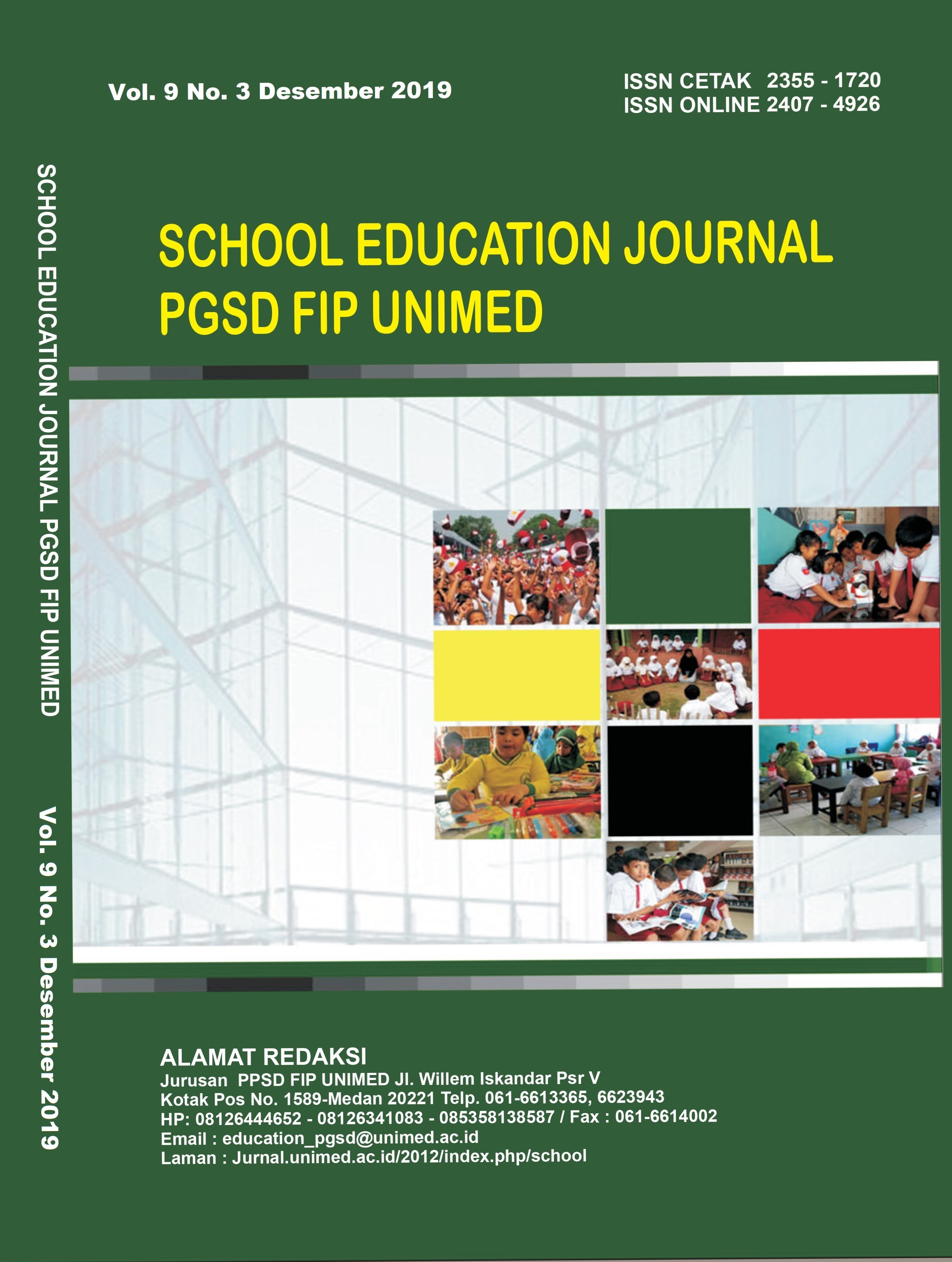PERBEDAAN HASIL BELAJAR DAN KEMAMPUAN BERPIKIR KRITIS SISWA YANG DIAJAR DENGAN MENGGUNAKAN MEDIA HANDOUT DAN POWER POINT PADA MATERI LARUTAN PENYANGGA
DOI:
https://doi.org/10.24114/sejpgsd.v9i3.15683Abstract
This study aims to determine the differences in learning outcomes and critical thinking ability of students who are taught by the model of Problem Based Learning using the media handout and power point. The population in this study were all students of class XI SMA Negeri 1 Berastagi. Sampling was done by random sampling. Then hypothesis testing is conducted using a two-party test of Independent Sample T-Test. To test the hypothesis I obtained results sig. 0,018 (sig. < 0,5) which means there is a significant difference in students' learning outcomes who are taught by the model of Problem Based Learning using the media handout compared learning outcomes of students who are taught by the model of Problem Based Learning using media power point on the material buffer solution. To test the hypothesis II result sig. 0,001 (sig. <0,5) which means there is a significant difference in students' critical thinking ability who are taught by the model of Problem Based Learning using the media handout than students' critical thinking ability who are taught by the model of Problem Based Learning using media power point on the material buffer solution.Keywords: Problem Based Learning, Handouts, Buffer Solution.Downloads
Published
Issue
Section
License
Authors whose manuscripts are approved are approved as follows:
The publication rights for all journal manuscript materials published/published on the SEJ (School Education Journal) E-Journal site are held by the editorial board with the author's knowledge (moral rights remain with the manuscript authors).
The formal legal requirements for accessing this electronic digital journal article are subject to the terms of the Creative Commons Attribution-ShareAlike (CC BY) license, which means that E-Journal SEJ (School Education Journal) has the right to store, transfer media/format, manage in the form of a database, maintain, and publish articles without asking permission from the author as long as the author's name remains as the copyright owner.
Manuscripts published/published electronically are open access for educational, research, and library purposes.

